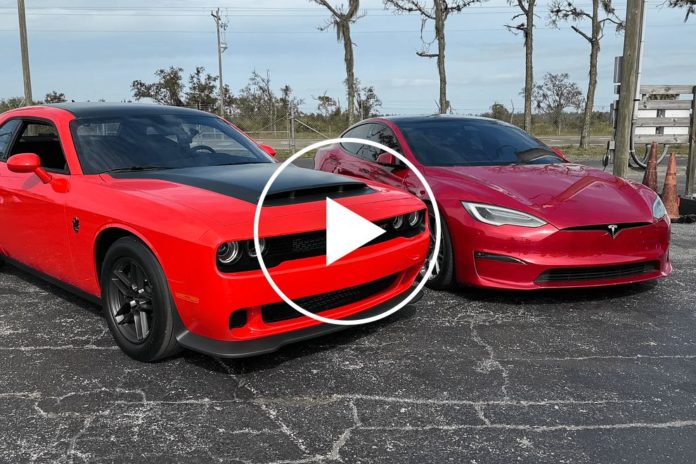On the other hand, the Model S Plaid has a tri-motor setup good for 1,020 hp. The number may be slightly short of the muscle car’s output figures, but the Model S Plaid – like any other EV – can produce instant maximum torque from a standstill. Its AWD system also provides traction on all four wheels, allowing the sedan to complete a quarter-mile in under nine seconds with a few modifications.
The Challenger had the front passenger and rear seats deleted, along with other means of reducing weight. However, the muscle car didn’t run with the optional carbon fiber wheels, which would’ve saved a significant amount of weight. From the factory (with a front passenger seat), the muscle car weighs 4,275 lbs – around 500 lbs lighter than the EV rival. That should give it an advantage when taking off the line at full throttle.
At the first go, the Model S Plaid dusted the Challenger, finishing in 9.403 seconds at 146.67 mph; the muscle car finished in 9.835 seconds at 142.67 mph.

